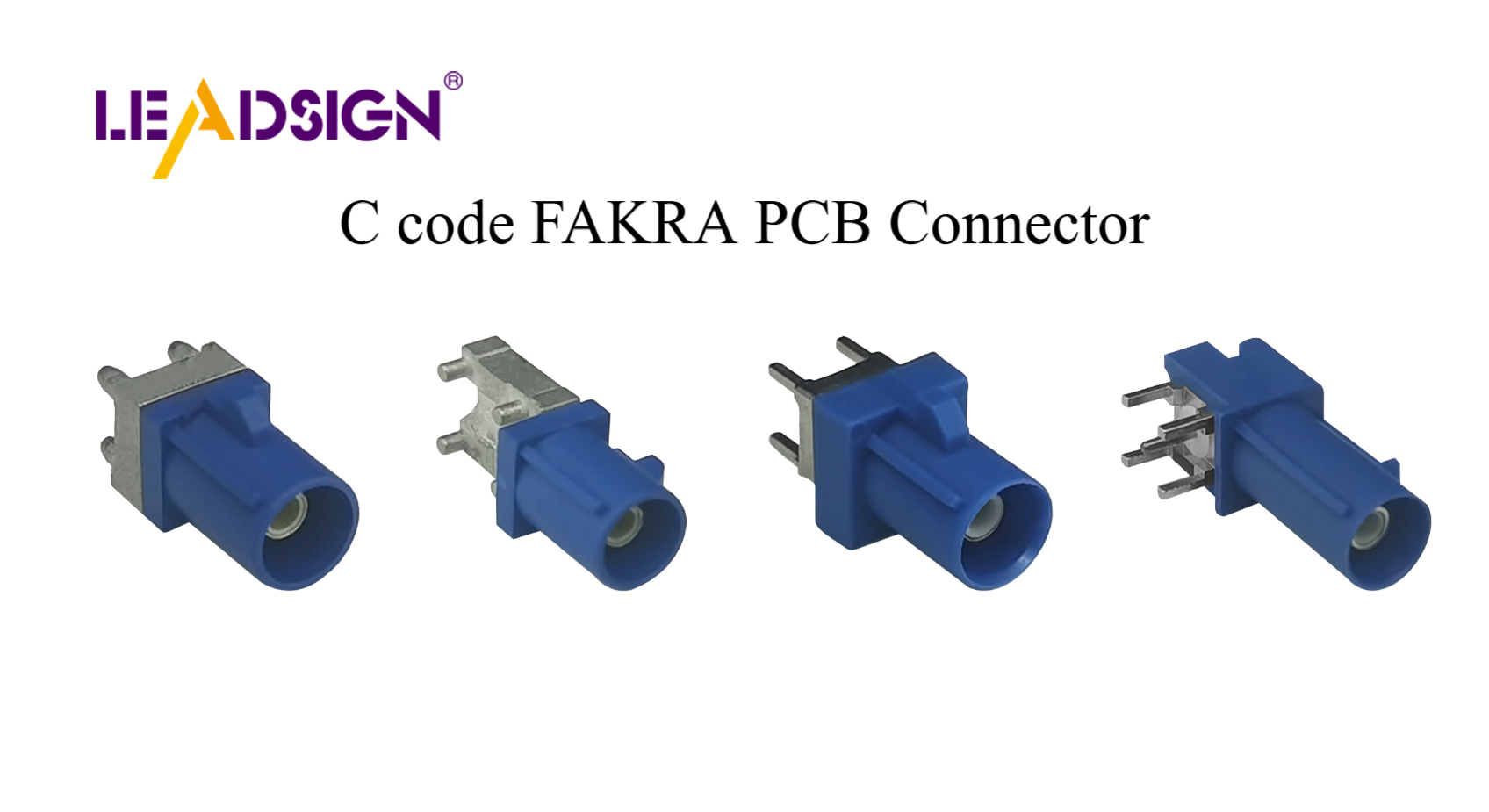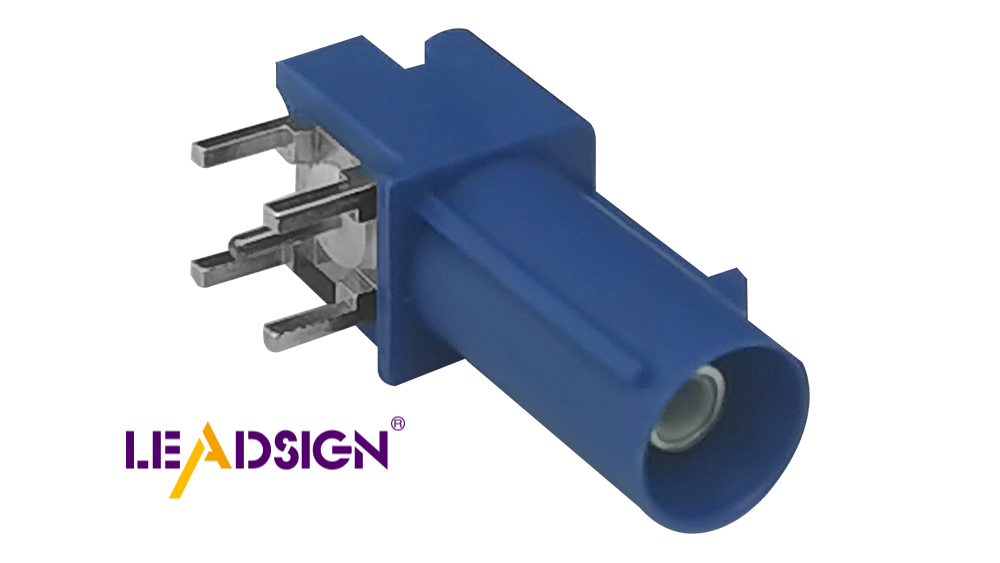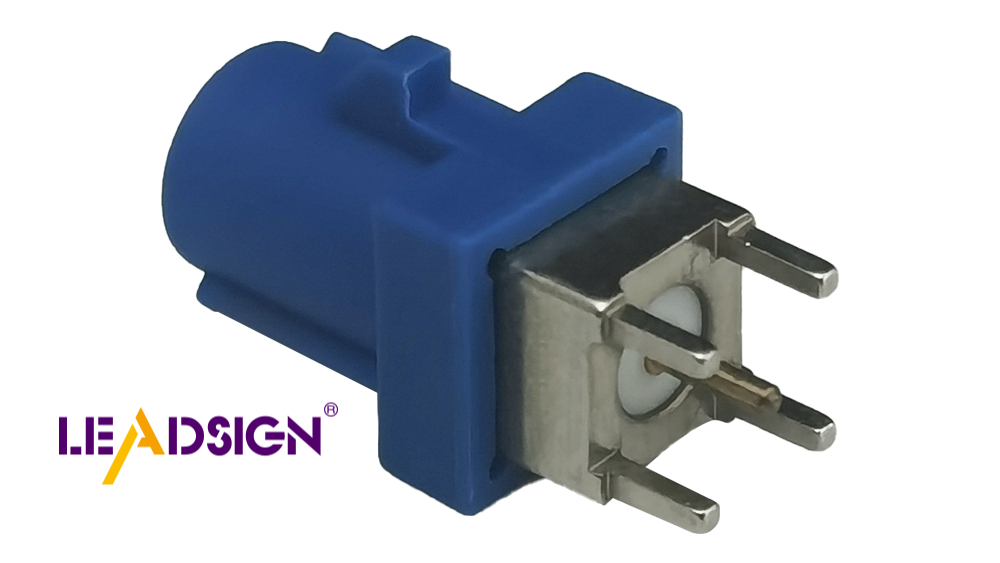Wire Connectors Automotive Type: Easy Installation Guide

Wire connectors automotive type are important for safe car wiring connections. A strong connection stops electrical problems and improves performance. Using the right type of wire connector makes installation easier. It also lowers the chance of loose or weak connections. Good connectors keep electricity flowing to parts like sensors and lights. Careful installation helps avoid bad connections or wrong parts. By following steps correctly, you can make strong and lasting car wiring connections.
Key Takeaways
Gather the right tools and materials before starting your installation to ensure a smooth process and professional results.
Choose the correct type of wire connector based on your specific wiring needs to avoid weak connections and electrical issues.
Follow a step-by-step approach for installation, including preparing wires, securing connections, and protecting them with insulation.
Test your connections with a multimeter to confirm they are secure and functioning properly, preventing future electrical problems.
Avoid common mistakes such as using the wrong connectors or skipping insulation, as these can lead to weak connections and safety risks.
Regularly maintain and check your wire connections to ensure they remain in good condition and to catch any potential issues early.
Tools and Materials Needed for Installation

Before you start, gather all tools and materials. The right tools make the job easier and faster. Below are the tools and materials needed for installing automotive wire connectors.
Tools You Need
To make strong connections, use tools made for car wiring. Here’s a list of important tools:
Wire stripper and cutter
This tool helps remove wire covering without damage. It also cuts wires to the right size for neat work.
Crimping tool or soldering iron
A crimping tool presses the wire into the connector tightly. A soldering iron melts metal to join the wire and connector. Both tools make strong connections. Choose based on what works best for you.
Heat gun or lighter (for heat shrink tubing)
Heat shrink tubing keeps wires safe from water and damage. Use a heat gun or lighter to shrink it tightly around the wire and connector.
Multimeter (for testing connections)
A multimeter checks if wires are connected properly. It ensures electricity flows without problems. This tool confirms your work is done correctly.
Materials You Need for Good Connections
Good materials are as important as good tools. Here are the materials you need:
Automotive wire connectors (e.g., butt connectors, spade connectors)
These connectors fit specific wiring jobs. For example, OEM wiring connectors match your car’s parts perfectly, avoiding problems.
Heat shrink tubing or electrical tape
Heat shrink tubing protects wires from water and wear. If you don’t have it, electrical tape works too.
Correct gauge wires
Pick wires that match the size needed for your job. Right-sized wires work better and don’t overheat. For tough jobs, use cross-link automotive wire. It handles heat well and works with most connectors.
Having these tools and materials ready helps you do a great job. Being prepared reduces mistakes and gives professional results.
Step-by-Step Installation Instructions

Installing wire connectors automotive type needs care and the right steps. Follow these simple instructions to make strong and safe connections.
Step 1: Get the Wires Ready
Getting wires ready is very important for good results. Do these steps:
Cut wires to the needed length.
Use a wire cutter to cut wires to the right size. Don’t leave extra wire, as it can cause mess and problems.
Remove the covering from wire ends.
Use a wire stripper to take off the wire’s outer layer. Expose about 1/4 to 1/2 inch of the metal inside. Be careful not to harm the wire strands, as this can weaken the connection.
Tip: A good wire stripper helps avoid cutting the wire strands. This makes the strip clean and neat.
Step 2: Pick the Right Connector
Picking the correct connector is important for a strong connection.
Match the connector to the wire size and job.
Choose a connector that fits your wiring needs. For example:
Butt connectors join two wires end-to-end.
Spade connectors connect wires to terminal blocks.
Heat-shrink connectors protect against water and rust.
Always match the connector to the wire size. Using the wrong size can make the connection weak. If using a wiring harness, ensure the connector fits the harness.
Note: Insulation displacement connectors (IDC) are great if you don’t want to crimp or solder. They connect by piercing the wire’s cover.
Step 3: Attach Butt Connectors or Other Types
After preparing wires and picking the right connector, start attaching.
Put the stripped wire into the connector.
Push the bare wire into the connector until it touches the metal inside. Twist the wire strands neatly before inserting to stop fraying.
Make sure the wire is fully inside the connector.
Check that the wire is securely in the connector. The metal part of the wire should touch the connector’s metal for good electricity flow. Don’t leave any wire sticking out.
Reminder: For heat-shrink connectors, slide the tubing onto the wire before inserting it into the connector. This saves time and avoids mistakes later.
By following these steps, you can make strong and safe connections. Preparing wires and choosing the right connectors are key to success.
Step 4: Secure the Wire to the Connector
Attaching the wire to the connector is very important. You can crimp or solder based on your tools and needs.
Crimp the connector to the wire.
Crimping is a common way to secure wires. First, place the connector in the crimping tool. Next, insert the bare wire into the connector until it touches metal. Squeeze the tool tightly to lock the wire in place. This makes a strong connection for electricity to flow. Crimp connectors like butt and spade types are easy to use and reliable.
Tip: Gently pull the wire after crimping to check if it’s secure.
Solder the wire for a stronger connection.
Soldering creates a tougher bond for important wiring. Heat the soldering iron and touch it to the wire and connector. Add solder to join them together. Let it cool to make a solid connection that resists movement. This method is great for wiring harnesses or critical tasks.
Reminder: Don’t use too much solder. It can make the connection bulky.
Step 5: Protect the Connection
Covering the connection keeps it safe from water and damage.
Use heat shrink tubing for insulation.
Heat shrink tubing is great for protecting wires. Before crimping or soldering, slide the tubing onto the wire. After securing the connection, move the tubing over the exposed area. Heat it with a heat gun or lighter until it fits tightly. This seals the connection and keeps it safe.
Use electrical tape if tubing isn’t available.
If you don’t have tubing, wrap electrical tape around the connection. Cover it fully and overlap the tape slightly for a good seal. While not as strong as tubing, tape works for most jobs.
Note: For wet areas, heat-shrink connectors work better because they seal tightly.
Step 6: Test the Connection
Testing makes sure the connection works properly.
Check the connection with a multimeter.
Set the multimeter to continuity mode. Place one probe on each end of the connection. If it beeps or shows low resistance, the connection is good. This step ensures the wires are secure and electricity flows correctly.
Pro Tip: Test your connections often to find problems early.
By following these steps, you can confidently install wire connectors. Crimping or soldering, insulating, and testing ensure safe and lasting connections for your car wiring projects.
Mistakes to Avoid When Installing Connectors
Avoiding mistakes helps make strong and lasting connections. Here are common errors and tips to prevent them.
Picking the Wrong Connector
Using the wrong connector can cause weak connections. Always match the connector to the wire size and job. For example, butt connectors join two wires, while spade connectors fit terminal blocks. Wrong connectors can lead to electrical problems or damage.
Tip: Look at the wire size on the connector package. This helps you pick the right one for your wires.
Bad Wire Stripping
Stripping wires poorly can harm the strands inside. This weakens the connection. Use a wire stripper made for car wiring. Don’t use knives or scissors, as they can cut the wire.
Steps for Stripping Wires:
Choose the right slot on the wire stripper.
Place the wire in the slot and squeeze gently.
Pull off the insulation smoothly without twisting.
Reminder: Damaged strands make the connection weaker and may fail under pressure.
Weak Crimping or Soldering
Loose connections can cause electrical problems or safety risks. Crimping is a quick way to secure wires. Use a crimping tool to press the connector tightly. Test the crimp by gently pulling the wire.
For stronger bonds, soldering is better. Heat the soldering iron and add solder to join the wire and connector. Let it cool before testing.
Pro Tip: Crimping is faster and works well for most car wiring. Many professionals use crimping for its strength and ease.
By avoiding these mistakes, you can make safe and reliable car wiring connections.
Skipping the Insulation Step
Insulate connections to stop moisture and prevent corrosion.
Insulating wires is very important in any installation process. If you skip this step, wires can get wet or dirty. This may cause rust or short circuits. Good insulation keeps your electrical system working well for a long time.
Follow these steps to protect your connections:
Pick the right insulation material
Heat shrink tubing works best for covering connections. It seals tightly, keeping water and damage away. Electrical tape is another choice but isn’t as strong as tubing. For important jobs like a wiring harness, always use heat-shrink tubing or connectors.Use heat shrink tubing properly
Put the tubing on the wire before crimping or soldering. After securing the connection, slide the tubing over the exposed part. Heat it with a heat gun or lighter until it fits tightly. This step protects and strengthens the connection, making it last longer.Seal connections in wet areas
In damp places, use waterproof connectors or double-layer tubing. These give extra protection, keeping your wiring safe even in tough conditions.
Pro Tip: Check the insulation after applying it. Make sure there are no gaps or loose spots where water could get in. A good insulation job will look smooth and tight.
Insulation is not just about safety; it improves your system’s performance. By insulating every connection, you avoid problems and make your wiring last longer.
Helpful Tips for a Strong and Safe Butt Connection
Pick Good Quality Connectors
Using good connectors makes strong and lasting connections. Strong materials last longer and don’t break easily. Cheap connectors can fail and cause problems. Always pick connectors made for cars because they handle tough conditions. Waterproof connectors are great for keeping moisture out, even in wet places.
Tip: Don’t reuse old connectors. Old ones can weaken and cause bad connections.
Check Your Work Carefully
Always check your work to make sure it’s done right. After connecting, look for loose wires or gaps. Loose wires can stop electricity from flowing properly. Gently pull the wires to see if they’re tight. If you see exposed copper or wires not lined up, fix it to avoid issues later.
Reminder: Wires that don’t line up can make weak connections. Always align wires before securing them.
Use a multimeter to test your connection. Set it to check if electricity flows through. This step ensures your wiring is safe and works well.
Mark Your Wires for Easy Repairs
Labeling wires helps with future fixes or changes. Use labels or colored tape to show what each wire does. For example, marking wires in a harness makes finding connections easier when fixing problems. Clear labels save time and avoid mistakes.
Pro Tip: Use labels that can handle heat so they last longer.
Neat wiring looks better and prevents errors. Labeling wires makes repairs simple and keeps your system working well.
Take Care of Your Wire Connections
Keeping your wire connections in good shape makes them last longer. Regular checks help find problems early and avoid big repairs. Follow these steps to keep your wiring safe and working well:
Check connections often for damage or wear.
Look for signs of damage
Check each connection closely. Look for broken wires, loose parts, or burnt spots. These can mean overheating or rust. Replace damaged parts quickly to stop more issues.Test if the connection is strong
Gently pull on the wires to see if they’re tight. Loose wires can stop electricity or fall out. If a wire is loose, crimp or solder it again to fix it.Check the insulation
Look at the heat shrink tubing or tape covering the wires. Check for cracks, peeling, or holes. Broken insulation lets water and dirt in, causing rust or short circuits. Replace bad insulation to protect the wires.Clean the connections if dirty
Dirt can build up over time, especially in cars. Use a soft brush or air to clean around the connection. Clean connections work better and last longer.
Tip: Don’t reuse old connectors. Old ones don’t hold well and can cause problems. Always use new, good-quality connectors when fixing wires.
Make sure wires are lined up
Misaligned wires can weaken the connection. Check that all wires are properly placed in the connector. Misalignment often happens during setup, so double-check to avoid future trouble.Use a multimeter to test
Test the connection with a multimeter. Set it to check if electricity flows smoothly. This step makes sure your wiring works without problems.
Pro Tip: Check your wires regularly, especially after long trips or bad weather. Taking care of your wiring helps it last longer and prevents sudden failures.
By maintaining your wiring, you keep it safe and working well. Regular checks and quick fixes help your car run smoothly and avoid electrical problems.
Using the right tools makes installing car wire connectors easy. Preparing well helps make strong and lasting connections. This lowers the chance of electrical problems. Avoid mistakes like bad insulation or wrong connectors. Good insulation stops water and rust, keeping wires safe. Follow this guide to do car wiring projects correctly. It will help you get great results every time.
FAQ
Why use high-quality connectors?
Good connectors make strong and lasting electrical connections. They lower the chance of failure from bad materials. These connectors, made from tough stuff like polycarbonate, resist rust and insulate well. Buying from trusted brands ensures safety and long-lasting use in car wiring.
Tip: Pick connectors from reliable brands to avoid cheap, weak ones.
Why choose OEM automotive connectors?
OEM connectors give steady and accurate electrical connections. They stop loose or weak links that might cause problems in your car’s system. These connectors help important parts like lights and sensors work properly.
Pro Tip: OEM connectors keep your car’s wiring safe and prevent costly fixes.
How do I pick the right wire connector?
Choose a connector based on wire size and job type. For example:
Butt connectors join wires end-to-end.
Spade connectors link wires to blocks.
Heat-shrink connectors protect from water and rust.
Matching the connector to the wire size ensures a good connection.
Can old connectors be reused?
It’s not a good idea to reuse old connectors. Over time, they can weaken, rust, or fail to hold wires tightly. This may cause bad connections or electrical issues. Always use new, strong connectors for better results.
Reminder: Old connectors can make your wiring unsafe and unreliable.
What tools are needed for wire connectors?
You’ll need these tools for a good installation:
Wire stripper and cutter to prepare wires.
Crimping tool or soldering iron to secure wires.
Heat gun or lighter to shrink tubing.
Multimeter to test and check connections.
Using the right tools makes the job easier and better.
How to protect wire connections from water?
Use heat-shrink tubing or waterproof connectors. Heat-shrink tubing seals tightly when heated, keeping water and dirt out. For wet areas, choose connectors made to handle moisture.
Note: Good insulation keeps wires safe and lasts longer.
What are IDCs, and when to use them?
IDCs connect wires by piercing the cover without stripping or soldering. They are quick to use and come in types like pigtail or inline. Use IDCs for fast and easy wiring jobs.
How to check if a connection is secure?
Test with a multimeter. Set it to continuity mode and touch both ends of the connection. A beep or low resistance means the connection is good. Testing ensures electricity flows safely.
Pro Tip: Test connections often to find problems early.
What if wires don’t align in the connector?
Misaligned wires can cause weak connections. Take them out and line them up again. Make sure the bare ends touch the metal inside for good flow.
Tip: Check wire alignment during setup to avoid issues later.
How to maintain wire connections?
Keep connections in good shape with regular checks:
Look for damage, rust, or wear.
Test with a multimeter to ensure they work.
Replace broken connectors or covers quickly.
Clean dirty connections with a soft brush.
Reminder: Regular checks prevent problems and make wires last longer.
See Also
Understanding Fakra Connectors for Honda Cars
Exploring Fakra Connectors Used in Ford Vehicles
Fundamentals of HSD Connectors in Automotive Applications

